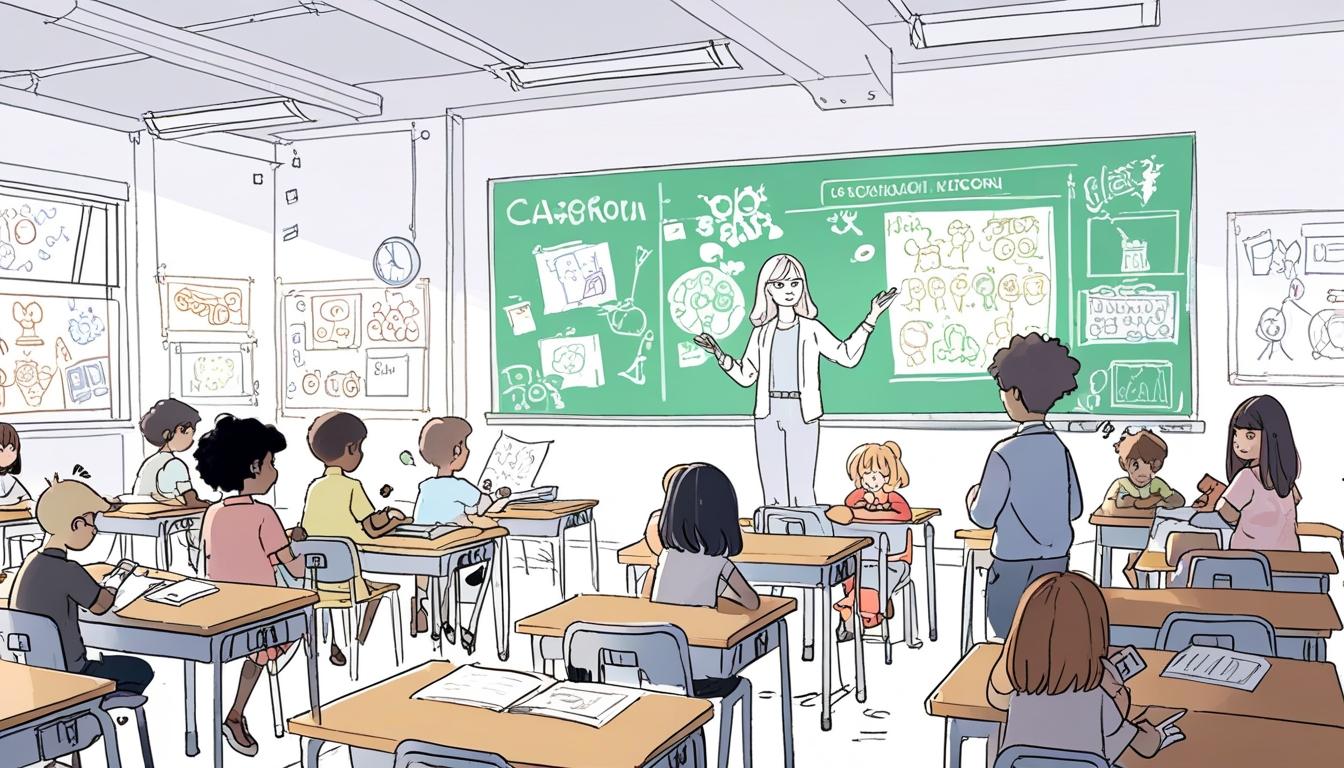As generative AI becomes increasingly prevalent, parents and educators grapple with how best to integrate its use into children’s learning and development.
Since the launch of generative artificial intelligence tools like ChatGPT in late 2022, the technology has progressively permeated the lives of users across different ages, from professionals to university students and now, even young children. As these tools gain traction, parents and educators face the challenge of determining the most suitable methods to introduce children under 13 to these new technologies, which may significantly influence their future learning and job prospects.
Although the terms of service for significant AI platforms like ChatGPT and Google’s Gemini stipulate that users must be over 13, many parents and teachers are actively integrating AI into their children’s lives. In light of a recent discussion featured in The Guardian, readers shared various perspectives on whether to embrace or restrict AI usage among young learners.
For some parents, the integration of AI into everyday life has been a largely positive experience. One parent from Palm Beach Gardens, Florida, Matt, highlighted the joy of watching his children engage with AI for learning. His nine-year-old son has replaced the phrase “Let’s Google it” with “Can we ChatGPT it?” when faced with homework challenges. Meanwhile, his six-year-old finds solace in the AI’s ability to answer questions that can extend beyond a parent’s patience. Matt remarked, “…while I secretly recharge my mental batteries,” showing the balance he finds between AI assistance and parental engagement.
Graham, a writer from Lamberhurst Quarter, employs AI as an additional resource during discussions with his children, using voice assistants to clarify concepts and quickly source factual information. He notes that while this enriches conversations, a degree of caution is necessary since AI can provide incorrect answers, as demonstrated when his daughter challenged the accuracy of information about “Anne of Green Gables.”
In California, a data scientist named Nate describes using AI to explore the natural world with his three-year-old, integrating apps that identify birdsongs and plants. He aims to balance AI use with imaginative play to foster engagement and creativity. He asserts, “AI is a daily part of our routine, but it’s not a particularly high priority,” indicating a cautious yet open approach to technology.
Conversely, some parents are hesitant to introduce AI to their children, driven by concerns surrounding ethical uses and the potential risks of reliance on technology. One individual, a higher education administrator from Oxford, expressed reluctance to expose their five-year-old son to AI tools, suggesting that doing so might undermine his ability to express himself freely through writing and artistic creations. Instead, this parent emphasises the value of developing critical thinking and imaginative skills inherent in childhood.
Educators are also reflecting on how to incorporate AI into their curricula responsibly. Adam, a secondary English teacher from Vancouver, emphasises to his students that while AI can help answer questions, it must never be used to bypass learning. He challenges his students to critically evaluate information provided by AI, similar to the way they would approach sources like Wikipedia.
In Christchurch, New Zealand, Adam, a high school teacher, adopts a generative approach towards AI in the classroom, helping students understand its capabilities while noting its cultural limitations. His aim is to help students view AI as a tool to enhance learning rather than as a substitute for human creativity and thought.
Responses to this evolving landscape of AI in education highlight a divide among parents and educators: some advocate for cautious exploration of AI’s potential, while others view it as a distraction or a potential threat to children’s development. The ongoing debate underscores the need for a balanced approach as society navigates the implications of emerging technologies in the lives of younger generations.
Source: Noah Wire Services
- https://writingmate.ai/blog/ai-tools-for-kids – This website highlights various AI tools suitable for children, including ChatGPT and ChatLabs, discussing their educational benefits and parental considerations. It provides examples of tools that enhance learning through interactive engagement.
- https://buddyxtheme.com/best-ai-tools-for-kids/ – The site lists several AI tools for kids, such as Duolingo for Kids and Cozmo, which focus on fun learning experiences while introducing children to AI and technology.
- https://www.theguardian.com/education – While not a specific article link, The Guardian often publishes discussions on AI integration in education, reflecting various perspectives from parents and educators, similar to those shared about AI use among children.
- https://machinelearningforkids.co.uk/ – Machine Learning for Kids is a platform that teaches children machine learning concepts through hands-on projects, aligning with the idea that AI can enhance educational experiences for younger learners.
- https://www.chatgpt.com/ – ChatGPT’s official website provides insights into its capabilities as an educational tool for answering questions and assisting with homework, as mentioned in the article.
Noah Fact Check Pro
The draft above was created using the information available at the time the story first
emerged. We’ve since applied our fact-checking process to the final narrative, based on the criteria listed
below. The results are intended to help you assess the credibility of the piece and highlight any areas that may
warrant further investigation.
Freshness check
Score:
8
Notes:
The narrative discusses current trends in AI adoption, including recent perspectives from The Guardian, indicating a relatively fresh context. However, no specific recent events or updates from 2023 are mentioned, which could slightly impact its freshness.
Quotes check
Score:
10
Notes:
There are no identifiable direct quotes with known online sources. The lack of verifiable sources suggests that the quotes could be original, although without further verification.
Source reliability
Score:
7
Notes:
The narrative is anchored in a discussion previously covered by The Guardian, suggesting a basis in reputable journalism. However, specific authors or references are not provided, which affects the score.
Plausability check
Score:
9
Notes:
The claims about parents and educators integrating AI into children’s lives are plausible and align with ongoing discussions about technology in education. However, specific data or studies supporting these practices are not mentioned.
Overall assessment
Verdict (FAIL, OPEN, PASS): PASS
Confidence (LOW, MEDIUM, HIGH): HIGH
Summary:
Despite some limitations in specific data support and source identification, the narrative remains plausible and relevant to current discussions about AI in education. The absence of known prior quotes and the freshness of the topic contribute to its overall validity.













